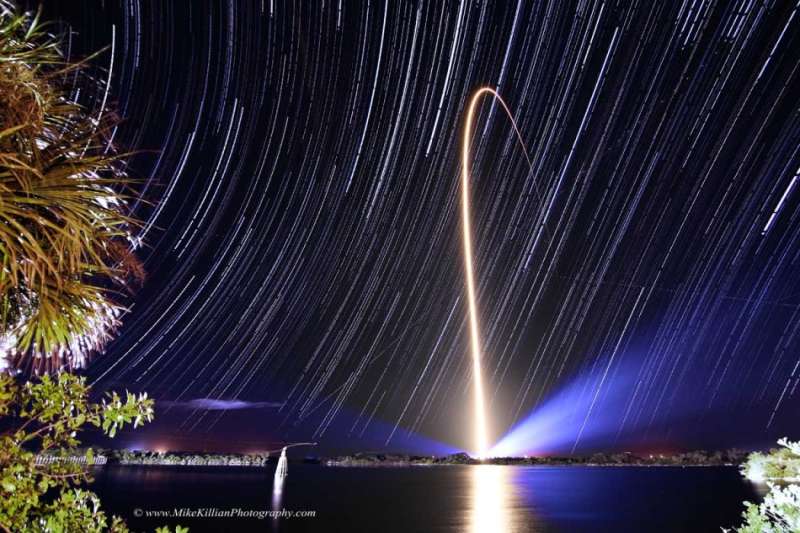Credit & Copyright: Mike Killian /
AmericaSpace
Explanation:
Fixed to a tripod and looking east across the Kennedy Space
Center's Turn Basin,
a
camera captured these star trails
as a series of short exposures
over a three hour period on the evening of January 23rd.
Positioned just a few miles from Space Launch Complex 41 at Cape
Canaveral Air Force Station, it also captured a spectacular night
launch of an Atlas V rocket carrying NASA's
Tracking
and Data Relay Satellite TDRS-L.
Creating the trails,
the apparent motion of the stars through the
sky is just a reflection of the daily rotation of planet Earth on its axis.
But that rotation is also the reason the
rocket streak
follows a path arcing east across the Atlantic.
Launching toward
the east, in the direction of Earth's rotation,
adds the rotation velocity to the rocket
and reduces the fuel needed to reach orbit.
A little ironically, TDRS-L is destined for a
geostationary orbit.
From there, 36,000 kilometers or so above the
equator, it's orbital period will match Earth's rotation
and the satellite will hang motionless
in planet Earth's sky.
1999 2000 2001 2002 2003 2004 2005 2006 2007 2008 2009 2010 2011 2012 2013 2014 2015 2016 2017 2018 2019 2020 2021 2022 2023 2024 2025 |
Yanvar' Fevral' Mart Aprel' Mai Iyun' Iyul' Avgust Sentyabr' Oktyabr' Noyabr' Dekabr' |
NASA Web Site Statements, Warnings, and Disclaimers
NASA Official: Jay Norris. Specific rights apply.
A service of: LHEA at NASA / GSFC
& Michigan Tech. U.
|
Publikacii s klyuchevymi slovami:
star trail - launch - zapusk - sledy zvezd
Publikacii so slovami: star trail - launch - zapusk - sledy zvezd | |
Sm. takzhe:
Vse publikacii na tu zhe temu >> | |
